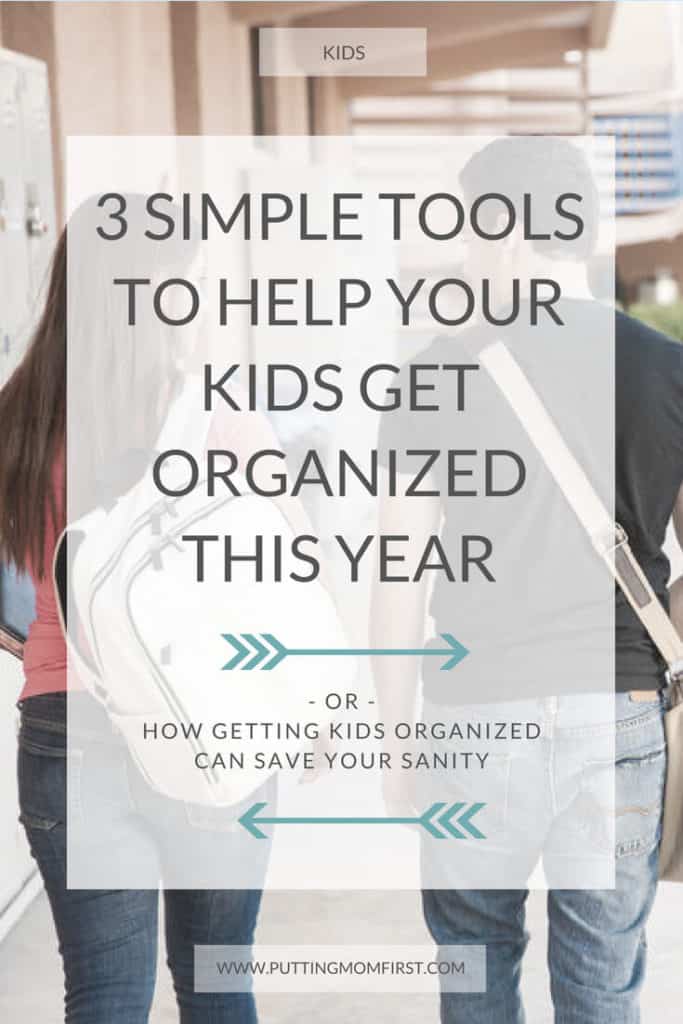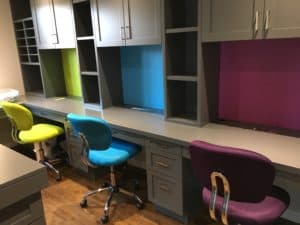We’re coming to the end of a beautiful summer. Fresh air and sunshine. Relaxed schedules. I don’t know about you, but I’m not really ready for it to end.
I remember when my kids were younger and required constant entertainment. I couldn’t wait for the first day of school! Now that they are older (my baby is starting high school this year) I could use another month of later wake-ups, no fighting with them over homework, and longer, warmer days.
School is starting 🙁
Reality is closing in, though, and we need to prepare for it.
You know how at the end of every school year you have all these ideas of what would have made the year PERFECT if you had just started with it earlier? Now is your chance.
I want to share 3 tools that are simple to set up and can make the biggest difference to how your kids approach the coming year. These are all things that are either free or very budget friendly.
This post contains some affiliate links for your convenience (which means if you make a purchase after clicking a link I will earn a small commission but it won’t cost you a penny more)! Click here to read my full disclosure policy.
1. Have a family calendar
Why is this important? Kids like to know what to expect. A family calendar will let them know when they have appointments, when they can expect guests for dinner, or when they are invited somewhere as a family. Over time, they will learn that the calendar is the place to look to know what’s going on with the rest of the family. You can even include your menu plan on the calendar.
The family calendar can be a paper calendar (like this one, or use one that you already have), a digital calendar (like Google Calendar) or on a whiteboard.
Whatever works for your family is the right way to go. In our house, we use a combination. I have a family Google Calendar, as well as access to my kids’ Google Calendars. When I make them an appointment, I put it on their calendars and they get a reminder email. When we have something as a family, I invite all the family members to the calendar event so they know to expect it. The kids can also add any events, tests, homework assignments, etc. to their personal calendars.
I have also recently started writing out a weekly calendar on the whiteboard wall in our family office. It’s a more visual way for the kids to see what’s on tap for the week, and I include any chores or tasks that need to get done during the week. They can manually add to the calendar as they have things come up so we can all see what they are dealing with.
Do you think your family will do better with a digital calendar or a paper calendar?
2. Dedicated homework space
Why is this important? We all like to have our own space. Kids are no different. When they know that space is dedicated to them (they don’t have to
For years in our home, the kitchen table was the place to be for homework. This made dinnertime difficult because it required them to clean up the table for dinner, but more importantly, they then had to replace everything AFTER dinner in order to get back to work. Is there a place that can be used ONLY for homework during the week? This can be a desk, a dining room table, a folding table – anything that will allow them to lay their stuff out and get to work. They should have a chair that is a good height for the table they are working at, and decent lighting (pull a lamp over, if necessary).
I also like to keep a shelf of dictionaries that the kids may need, as a reference for any homework, as well as a stash of extra school supplies (usually, the leftovers from the year before!). This helps alleviate the “I can’t do the work because I don’t have the right tools” excuse.
My dream workspace
My dream workspace became a reality last year when we made a family office/workspace. Each of us has our own dedicated desk, with an island in the centre that is on wheels (4′ x 4′). We also used special whiteboard paint on one of the walls to turn it into a full whiteboard wall. We had some paint left over, so we used it to coat the walls in front of the kids’ desks too.
3. Student Bullet Journal
You’ve heard me mention my Bullet Journal a bunch of times already. I have always loved writing things down and making lists. I’m a very visual person. Not everyone is, but the process of writing things down actually helps with memory. Kids are on their computers so much during the day, for both schoolwork and play, having a place where they write – pen to paper – is proven to be important for long-term retention of what they are learning.
The true beauty of the bullet journal is all you need is any notebook and a pen. I may have my notebook preferences for myself, but my high-schoolers don’t need it. Once they get the hang of the concept and use it regularly they can find the notebook that works best for them. There are lots of great options for notebooks at the dollar store to start with.
I strongly suggest you keep things as simple as possible for your child’s first student bullet journal. If your child is super-creative, encourage them to decorate it and make it into whatever makes them happy, but the basic framework gives them a place to keep track of all the things that they need to get done.
Here is the “How to Bullet Journal” video with Ryder Carroll to help explain:
***WARNING***, if you search YouTube, Instagram or Facebook, you will find more bullet journal devoted pages than you have time to look at. It’s a bit of a rabbit hole. ***END OF WARNING***
What we need to remember about all 3 of these tools is that in order to be effective, we must USE them. If we don’t update a calendar consistently, it isn’t reliable. The same goes for a bullet journal. Finally, if we use our homework space as a dumping ground, instead of a dedicated workspace, when we need to use it, we won’t be able to. Who wants to start work by having to wade through a mess of stuff to get to their desk?
“But, Chaviva, how is this about Putting Mom First?”
Great question!
When you have systems in place to help you hold things together, whether it’s to keep the house organized, your family organized, or yourself, your stress level goes down. It happens because everyone knows what to expect. There are no big, bad surprises. Things come up, of course, but for the most part, the consistency and the ability to rely on each other creates for a more peaceful home.
On the other hand, when the kids get home and don’t want to clean the desk to get their work done, they will find other things to do. If they haven’t written down what they have to get done for the day, they will revert to full-zombie TV or game mode.
We are trying to raise adults here, people. If we can teach them some of the things that would have helped us (and if some of those tools stick!), that would be AWESOME! And when our kids are relaxed, we have this amazing ability to enjoy the small moments a lot better.
I hope that this has been helpful. If you have tried bullet journaling, or have created a dedicated workspace for your kids, I would love to see it! You can post it on my Facebook page or tag me on Instagram @puttingmomfirst.
I look forward to seeing what you’ve done!


